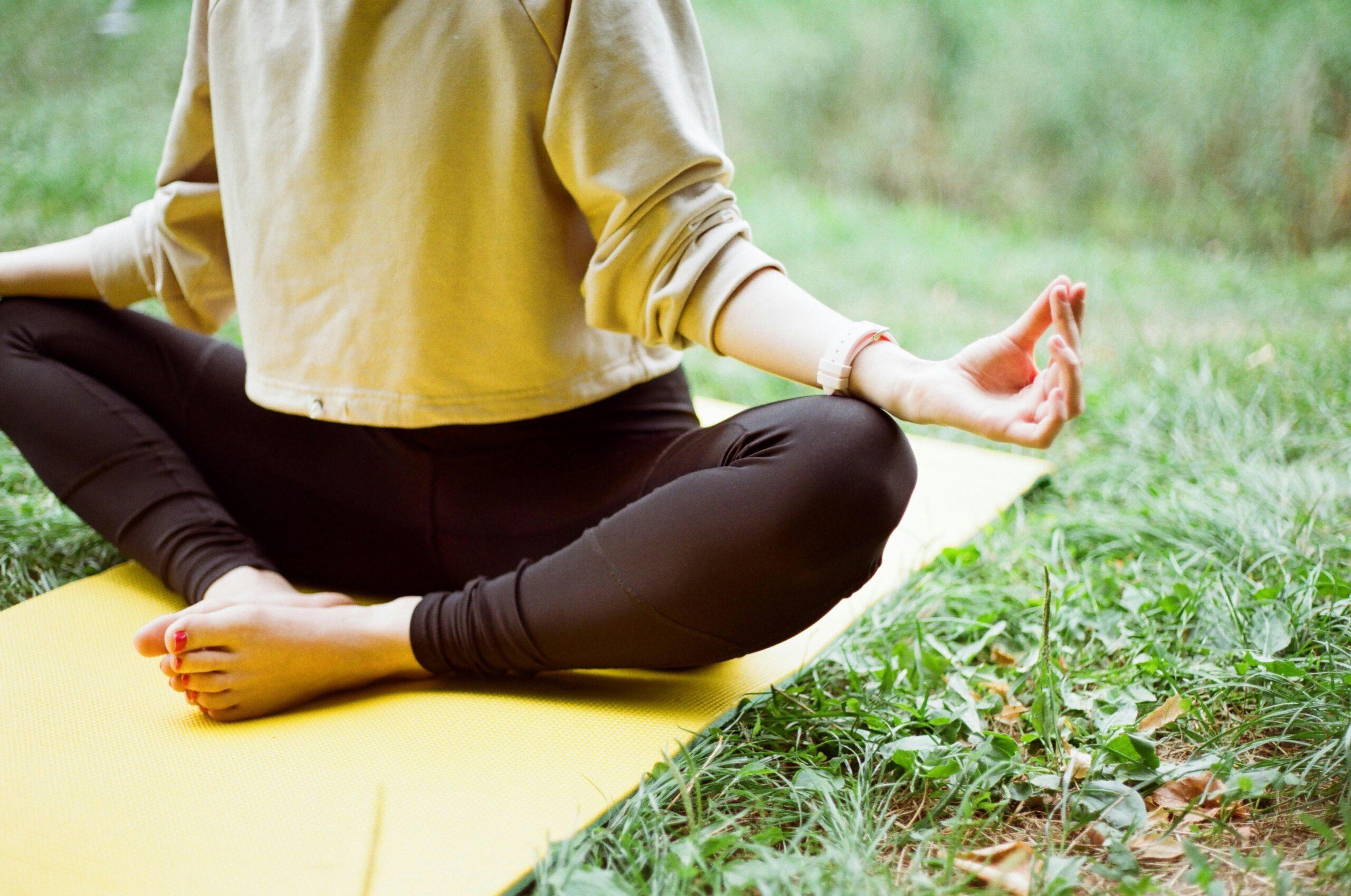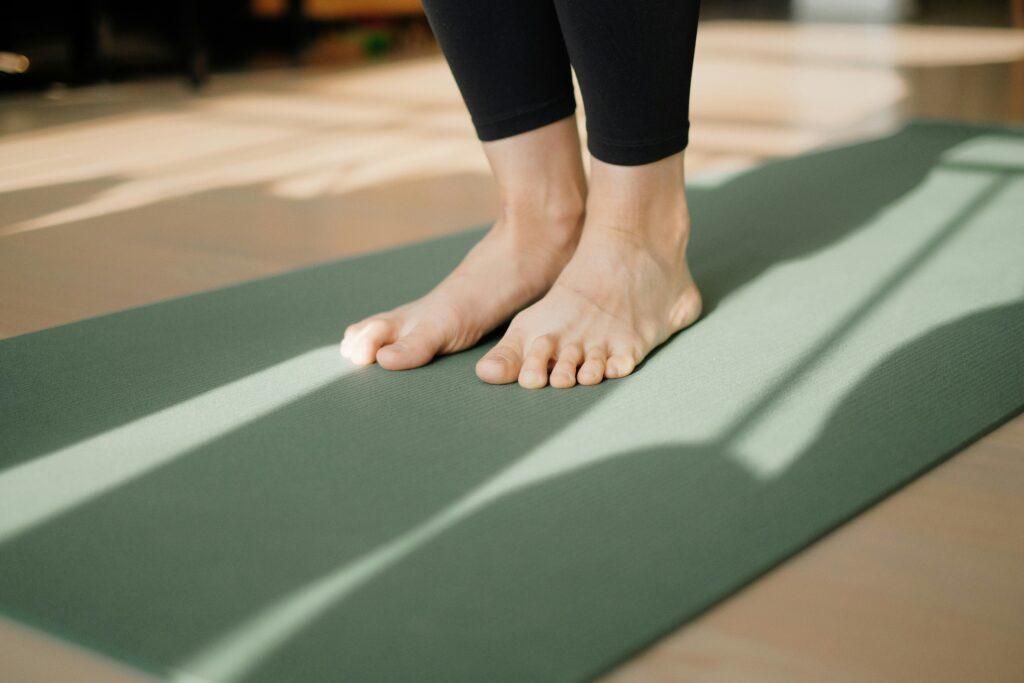Living in Alignment of Body, Mind & Spirit: The 8 Limbs of Yoga Explained

When we think of yoga, we often picture crowded studios with students in stylish clothes twisting their bodies into difficult shapes. However, the true practice of yoga is much more than that. In fact, yoga is the Sanskrit word for union, the alignment of body, mind and spirit. And, while the concept of yoga is simple, the practice consists of many facets.
The most well-known yoga text is The Yoga Sutras of Patanjali, which provides a framework for the practice of yoga. In this book, Maharishi Patanjali defines the Ashantga or Eight Limbs of Yoga.
These are guidelines to help us live fuller, happier lives. In Sanskrit, the word “Ashtanga” means eight limbs. He described eight practices that we should master in order to transcend suffering and recognise our true nature.
The Eight Limbs of Yoga are:
- Yamas: The Yamas are guidelines to help us treat others as we would like to be treated.
- Niyamas: The Niyamas are our own rituals and practices. They are those activities that help us nurture the body, mind, and spirit.
- Asana: Asana practice is what we typically see in a yoga studio; it is the practice of yoga postures, which help keep our bodies – the vehicles for our minds and spirits – healthy, flexible, and strong.
- Pranayama: Pranayama exercises are breathing techniques that bring energy and calmness to the mind, body, and spirit.
- Pratyahara: The practice of Pratyahara centers on turning our attention inward, away from the outside world.
- Dharana: Dharana is concentration, and this practice helps us move away from our thoughts as we enter meditation.
- Dhyana: Dhyana is finding stillness through meditation.
- Samadhi: Samadhi is translated as transcendence, when we understand and experience the true Self and feel totally connected with the whole of the Universe.We have an exciting series of upcoming blog posts explaining how to apply each Limb of Yoga to your life in greater detail.

1) Yamas
The First Limb of Yoga is Yamas. Yamas are restraints / behaviors that are to be practiced as the foundation of any spiritual or healing practice.
The Yamas are much like the Golden Rule, doing unto others as we would have them do unto us, and they consist of five philosophies and practices:
1) The first is Ahimsa, nonviolence or non-harming. When we practice Ahimsa, we commit to refraining from harming or creating suffering for any living being, at all times, through actions, word or thoughts. An example would be in practising asana – How many times have you ignored or pushed past an injury or limitation just to get into that yoga posture?
2) The next Yama is Satya, which means speak truth. Sometimes it is difficult to be honest with others and ourselves. Perhaps we tell a little lie about why we were late for work rather than owning up to our own mistakes When we are engaged in Satya, we do our best to take an honest look at our situations, relationships, and lives, accepting where we are in this moment. Patanjali’s Yoga Sutras says: “To one established in truthfulness, actions and their results become subservient”, which ultimately means that by continuing to practice honesty, our life experiences become the results of this honesty and truth, and no longer based on fear or ignorance.
3) The third Yama is Bramacharya. Often translated as celibacy or sexual control. Brahmacharya reminds us that sexual desire and activity must be practiced within healthy boundaries. For householders, intimacy with their spouse, in the prescribed period, in the proper manner, is considered Brahmacarya.
4) The fourth Yama is Asteya, non-stealing According to the realized sages, absence of desire for others’ possessions. This Yama reminds us that we need to be honest about what is ours and what is not. Asteya reminds us that we must respect other people’s boundaries, commitments, and possessions and only take what belongs to us.
The fifth Yama, Aparigraha, much like the Commandments that caution not to covet one’s neighbors’ property and relationships, reminds us to refrain from possessiveness. This is different from non-stealing because it has more to do with one’s state of mind rather than the action itself. Whenever we make bad choices in our lives, be that active or within our minds, we create an internal conflict that prevents us from realizing our potential. When we practice Aparigraha and are happy with what we have in our own lives, not looking outside ourselves for what others may have, we nurture a sense of well-being within that can help us expand and thrive.

2) Niyamas
The 2nd limb is Niyamas, which are observance and disciplines that are to be practiced to shape our personal behavior. They are those activities that help us nurture the body, mind, and spirit.
1) The first Niyama is Soucha, which is the practice of cleanliness. Soucha not only refers to the cleanliness in personal hygiene, but it also addresses the cleanliness of our internal environment (our bodies) and our living environment. For example, one way to practice Soucha is by committing to the wellbeing of our environment and taking active measures to care for the Earth. Actively engaging in the internal practice of Soucha includes eating nourishing meals that keep the body running efficiently, and replacing toxic thoughts with those that are more positive, creative and productive.
2) The second Niyama is called Santosha, meaning contentment. Santosha refers to surrendering the control of our lives in the present moment, and going with the flow. When we live our lives this way, we’re much more receptive to opportunities and experiences that present themselves when we keep an open mind. The result of practicing Santosha is experiencing increased love and joy in our own lives. When we’re happy and carefree, we can be of even greater service to others, and positively impact more lives around us.
3) The third Niyama, Tapas, focuses on self-discipline. The word Tapas in Sanskrit is for fire. When we live a life that is simple and organized, aligned with the rhythms of the universe, we allow the light, or fire of Universal Consciousness into our lives.
Some ways we can practice Tapas include waking early in the day, taking time to meditate, practice yoga, eat mindfully and sometimes fasting, connecting joyfully with others, and getting plenty of exercise and rest.
It is important to show up and be responsible for our own well-being. One way we can cultivate Tapas is through Satsang, which is the practice of connecting with individuals who seek to understand the Higher Self.
4) The fourth Niyama is Svadhyaya, or sacred study. When we read literature that enhances our spiritual growth, we shift from looking to our external environment for answers, to turning within and trusting our own divine wisdom. As we reflect on our inner selves, we also begin to understand that everything we need in life can be found by connecting with who we really are, which is Pure Consciousness. Whether you need an answer to one of life’s challenges, or guidance on your personal path, the answers can always be found within the wisdom of your own being— and practicing Svadhyaya can help you discover how to tune in to this innate ability.
5) The fifth Niyama is called Ishwara-Pranidhana. Ishwara Pranidhana refers to surrendering to the Divine, or a Higher Power.
When we have awareness and faith in a Divine Presence greater than ourselves, we begin to see the same presence in everything and everyone around us. This gives us a deeper understanding of the principle that we are all one, or, as is often said: “the divine in me recognizes the divine in you”.
Ishwara-Pranidhana also refers to surrendering to the wisdom of uncertainty, relinquishing our attachment to the past, and trusting that the uncertainty of the present moment holds the key to personal transformation. By focusing on these personal manifestations of Universal Consciousness, we’re also able to let go of what no longer serves us to make room for new experiences and lessons for our growth.
Spending time in nature allows us to practice Ishwara-Pranidhana, by helping us recognize that all things have the same prana, or life energy within them, that is expressed uniquely.

3) Asanas
In understanding the Eight Limbs of Yoga, we can appreciate that the Yoga Asanas are only one component of Yoga. You see, yoga is more than just physical exercise- but a way of life that enhances body, mind and spiritual wellness. The Yoga Asanas or poses are the third Limb of Yoga, which are equally as important to understand and practice alongside the other seven Limbs.
At the deepest level, practicing the Asanas allows us to experience and explore how the mind-body integration works. Consciously moving our bodies through yoga poses help us to become aware of the energy that flows through our bodies. The Asanas also promote a deeper sense of connection and appreciation to the environment around us. In fact, Ancient Yogic sages often witnessed the blossoming of flowers, animals at play, birds in the air, and the sturdiness of trees and plants as Yoga poses that mimicked these aspects of nature.
While there are thousands of Yoga poses, we only need to practice a few of them in order to reap the mind-body consciousness and spiritual benefits that Yoga Asanas provide.
Adopting a regular Yoga practice is said to help strengthen the body-mind connection, which can create balance, flexibility and strength in our personal lives. Additionally, the practice of higher intensity yoga (such as Vinyasa flow) can help strengthen the cardiovascular system and tone the muscles in our bodies.
Since our physical bodies are the vehicles in which we express ourselves and navigate through our world, it’s vital that we care for our bodies through physical, mental and spiritual well-being.
Asana is the Sanskrit word for “seat” or “position”. When we commit to our Yoga practices and practice the various Asanas with awareness, we provide our own bodies with a good “seat” or foundation, which allows us to experience the world with a brighter perspective and understanding of those around us, as well as connectedness to our environment.
Practicing the yoga Asanas offers us benefits while we’re in the postures, but also helps strengthen our bodies, minds and spirits that carry us through our daily activities. Not only do we feel more flexible physically, but the flexibility expresses itself through an increased ability to be flexible when challenging circumstances arise in our daily lives.
In fact, there’s a well known Yogic expression that goes “Infinite flexibility is the secret to immortality”. This expression suggests that flexibility promotes our youth and vitality, despite the number attached to our chronological age. There’s no better time than right now to begin practicing yoga. Yoga isn’t about flexibility or how deep you can move through an asana. Instead, yoga is a way of life and achieving a higher level of happiness and well-being.

4) Pranayama
Pranayama is the fourth of the Eight Limbs of Yoga, which is used as a tool to help connect us to ourselves, others and our environment using our breath— or life force. Prana is a Sanskrit word that describes the energy flowing through every living thing, and throughout the universe.
In the human body, this energy is expressed through the breath. To feel alive, vibrant and a greater sense of wellbeing, we want the energy of our bodies to flow freely. There are many breathing techniques that can help enhance our prana and teach us how to harness the energy of the breath.
At a physiological level, Pranayama is a wonderful tool to help strengthen the respiratory system. With a regular practice of deep breathing, we can invite more oxygen into our bloodstream which makes it easier for us to absorb nutrients.
Many specific pranayama techniques also help us reduce stress, relax and energize the body and mind. This makes Pranayama an ideal tool to use in our everyday lives to help us live with greater awareness and clarity.
Since prana is the life force of nature, when we connect with our breath, we also connect with everyone and everything else in the Universe. Practicing Pranayama can also help reverse the effects of the fight or flight response and the stress response, which can promote detrimental health issues such as increased blood pressure, heart rate and reduced blood and oxygen flow.
By consistently practicing pranayama exercises, we can help reduce the negative impact that stress has on the body: emotionally, spiritually, psychologically and physically.
There are many Pranayama techniques that can help invite powerful transformation into your life. Here are few examples:
- Dirga Pranayama ‘Three Part Breath’
- Nadi Sodhana ‘Alternate Nostril Breathing’
- Shitali Pranayama ‘Cooling Breath’
- Ujjayi Pranayama ‘Ocean Breath’
- Bhramari Pranayama ‘Humming Bee Breath’
Conscious breathing is simply being aware of your breath. It sounds all too simple, but it can be difficult to bring the mind back from reliving past, or from making projections into the future. Being aware of the energy flowing through you each second can help connect you with the present, and reverse the physiological reactions of the fight or flight response.
Conscious breathing can instantly help your mind and body feel calm and balanced. To practice conscious breathing, sit quietly and open your eyes. Begin breathing through your nose, gently inhaling and exhaling. After a few moments, observe your breath and visualize it flowing in and out through your nostrils. Continue conscious breathing for a few minutes, or until you notice a positive shift in how you feel.
Practicing Pranayama techniques every day is an easy, yet deeply efficient way to improve your overall health and wellbeing. Consistent practice of these techniques will help train your body to breathe more efficiently, even when you are not engaged in Pranayama exercises, which can help you feel more vital, peaceful and alive.

5) Pratyahara
Now, we’ll move on to the Fifth Limb of Yoga which is known as Pratyahara, and is based on controlling the senses. Ancient Yoga texts are full of stories about great sages and gurus who renounced the typical “householder” life and retreated to solitary locations, such as caves, in order to spend the rest of their lives in deep meditation. Perhaps this is an extreme example of turning the senses inward— and probably not the most practical choice for those of us who prefer to engage with the world by pursuing careers, raising families and enjoying time with friends.
The practice of Pratyahara centers on turning our attention inward, away from the outside world. Still, there’s great value in going within and experiencing the peace and tranquility that resides there, which doesn’t have to involve relocating to a remote cave and saying goodbye to Western civilization as we know it. Even those of us who would be considered “householders” by Vedic tradition can still experience the wonderful, life-changing benefits of Pratyahara.
Essentially, our five senses feed us from the world around us. But when we practice Pratyahara, we turn our senses inward in order to feed ourselves from what resides within. Pratyahara can help us understand why stepping away from the world is so valuable to our well-being, and the way we interact with others in our lives. To begin practicing Pratyahara, we can set aside a short time each day to retreat into a quiet environment, in order to connect with our Higher Self — the intelligent being within us, who is the silent witness to our life.
An ideal time to practice Pratyahara may be right after you finish your work day, as a way to neutralize the hustle of the day, before transitioning into the interaction friends, family and social activities. It can also be helpful to plan time for Pratyahara in advance. For example, it’s difficult to find silence in a crowded shopping mall or while sitting in traffic. Instead, more peace can be achieved by finding a quiet space for silence, perhaps in nature, which will allow us to fully absorb the spiritual benefits of Pratyahara.
Pratyahara is a wonderful way to prepare for meditation, and to become more aware and connected to your surroundings. By withdrawing the senses for a short period of time each day, we can enter more deeply into our own inner silence. However, Pratyahara can also serve as a beneficial practice on its own, which enables us to reconnect with ourselves to rebalance our body, mind and spirit.

6) Dharana
Dharana is the Sixth Limb of Yoga, which often gets confused with meditation. Dharana is concentration, and this practice helps us move away from our thoughts as we enter meditation. Dharana is translated from Sanskrit to “holding steady”, which means to go deeply within through single-pointed focus, and to calm the thoughts and activity of the mind.
Dharana isn’t just a one-time event, because bringing the mind back to single-pointed awareness is a practice. For instance, when we meditate using a mantra (which means “mind-instrument” in Sanskrit— a tool to pull us away from our thoughts), our minds still stray to thoughts, noises and other distractions. Dharana is the act of bringing the mind back to focusing on the mantra, away from any distraction.
The modern day lifestyle is all about multitasking. Drivers are talking and texting. Workers are answering emails while taking phone calls, organizing their schedules and having dinner with family and friends.
It’s not that we’re being rude, but that the chaos we endure each day seems to demand we pay attention to myriad things all at once. And in order to keep up, we feel compelled to do more and more. And this is when practicing Dharana is more important than ever.
The reality is that true connection with the Higher Self — which is our true identity — will never be found in doing more. Instead, we attain a greater understanding of ourselves through simply being, rather than getting consumed by the daily hustle of our schedules. And the better connected we are to our higher selves, the more joy and fulfillment we experience.
3 Ways You Can Begin Practicing Dharana
One way to begin practicing Dharana is to set aside time each day for an asana practice. Asanas or yoga poses, help us create greater single-pointed awareness and focus by practicing and holding various postures, while focusing on our breath.
Another way to invite more focus into our lives is by practicing pranayama, or breathing techniques. Breathing techniques — such as Ujjayi breathing — are very calming to the body and mind, which can help us focus our attention in the present moment even in the most stressful situations.
Using a meditation mantra is helpful for quieting the mind, such as the mantra “So Hum”. By simply repeating the words “So Hum” in tune with the breath, we can instantly help quiet the turbulence in our minds and connect to the stillness between our thoughts.
When using a mantra like “So Hum”, all you have to do is repeat each word as you inhale and exhale. For example, saying “So” as you inhale and “Hum” as you exhale. If you give this a try, you’ll begin to notice a deeper sense of calm and relaxation. And during this practice, we’ll begin to experience Dharana.
If your mind strays from a mantra during meditation, all you have to do to bring your mind back to focus is to turn your attention towards your breath again. Like any practice, the So Hum meditation is most effective when it’s practiced regularly.
By practicing Dharana, the calming of our minds, we can be more discerning about how we’re living our lives and step back from the busy routines that we follow unconsciously, which invites new ways of living into our lives. This is when we can begin to fully understand who we really are.

7) Dhyana
The seventh limb is Dhyana. Dhyana is finding stillness through meditation.
So, what sets Dharana and Dhyana apart? While in Dharana you’re actively practicing focus, in Dhyana you’re in a state of deep meditation. This means your mind is totally quiet.
Meditation offers many benefits for the mind, body, and soul. Scientific research has established that a regular meditation practice produces tangible benefits for mental and physical health, including:
• Lowered blood pressure
• Slower heart rate
• Decreased cholesterol levels
• Reduced production of “stress hormones,” including cortisol
• More efficient oxygen use by the body
• Increased production of the anti-aging hormone
• Improved immune function
For example, we can focus on a candle flame, a vibration, a mantra, or any other object. And as we practice Dhyana by focusing our mind on a specific object, we can start to turn our senses inward to contemplate— and ultimately realize—our own divine nature, which is who we really are.

8) Samadhi
Samadhi is the final limb and the ultimate destination on Patanjali’s eight-limbed path of yoga. It is often translated as enlightenment, but what does that really mean? At this stage, the meditator merges with his or her point of focus and transcends the Self altogether. The meditator comes to realize a profound connection to the Divine, an interconnectedness with all living things.
There are many common misconceptions about what if feels like to achieve this “oneness” of Samadhi. Some may imagine it’s like being in a trance, or eternal bliss. Samadhi is none of these things, and is quite the opposite. It’s about being more alive, fully awake, and fully conscious in this world, not escaping it to reach another. It’s the state of being completely present. In Samadhi, all of the layers fall away. We see that there is no distinction between us, you, me or it. We have a deep and profound understanding that all is one.
While Samadhi is the Eighth Limb of Yoga, it’s not necessary to practice the Eight Limbs in a sequential order. As spiritual practices for well-being, the Eight Limbs of Yoga can be practiced at any time, in any order that serves you best.
Like the petals of a lotus flower, the results will then unfold for us exactly as they’re meant to.
We are all Divine Beings, and the ultimate goal for practicing the Eight Limbs of Yoga is to help us rediscover this beautiful aspect of ourselves— an aspect that’s all too easy to forget when we’re consumed with chaotic routines.
